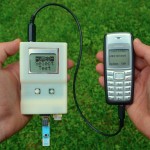 Regular readers of the blog will know that mobile healthcare is a topic that is cropping up with increasing regularity. Today I’ll be dedicated the blog to mobile healthcare, with three fascinating stories from the field that highlight some of the potential, and of course some of the progress already being made.
Regular readers of the blog will know that mobile healthcare is a topic that is cropping up with increasing regularity. Today I’ll be dedicated the blog to mobile healthcare, with three fascinating stories from the field that highlight some of the potential, and of course some of the progress already being made.
The first is the story of uMED, which is a remote monitoring device developed by researchers that was presented in a recent paper published by them documenting its use and development.
The device, which costs just $25, aims to offer a range of chemical and biochemical tests using a number of commercially available test strips and electrodes. This analysis then produces a range of outputs, which are sent via a cable attached to the headphone jack of a standard mobile phone. The data is sent via the voice channel of any mobile network, so there is not even the need of a data connection.
The data can then be analysed, either by cross referencing it against a cloud based database, or in person by a medical professional. A diagnosis can then be returned to the user via text message. The paper highlights how this kind of function could be invaluable in tracking the spread of disease, which with Ebola currently rampant throughout west Africa is a timely indication if ever there was one.
The range of uses of the device are incredibly wide, whether it’s testing for the safety of drinking water to diagnosing malaria. The paper also outlines plans for diseases such as HIV, E. Coli and Dengue fever to be covered in the future.
The device works by using electrochemical detection to perform the range of chemical testing offered by uMED. Whilst traditionally, such an approach would be expensive, the uMED developers believe they’ve redesigned the process, thus making it affordable to a wide range of potential users. In addition to its affordability, the developers also believe the device is user friendly enough to offer a single, automated process.
uMED is developed using the Arduino open source environment, so the core application can be modified and developed by other parties to extend its functionality. That it operates so well without the need for a smartphone merely adds to its attractiveness. After all, there are estimated to be some 3 billion people still using older mobile devices.
The researchers will shortly be undertaking field trials of the device in India, and are working with the technology firm Diagnostics For All to help improve the functionality of the device. It’s certainly a project well worth keeping an eye on.